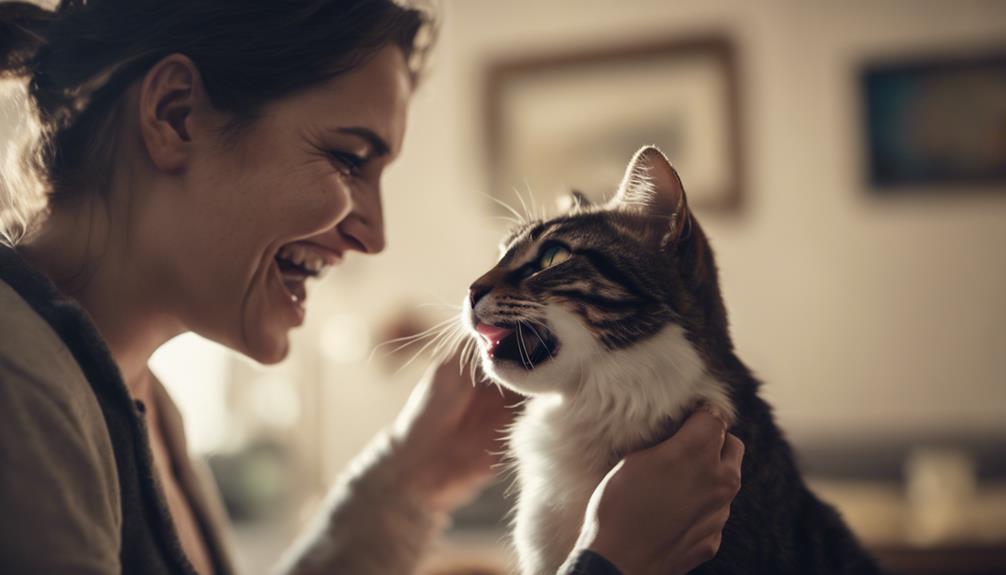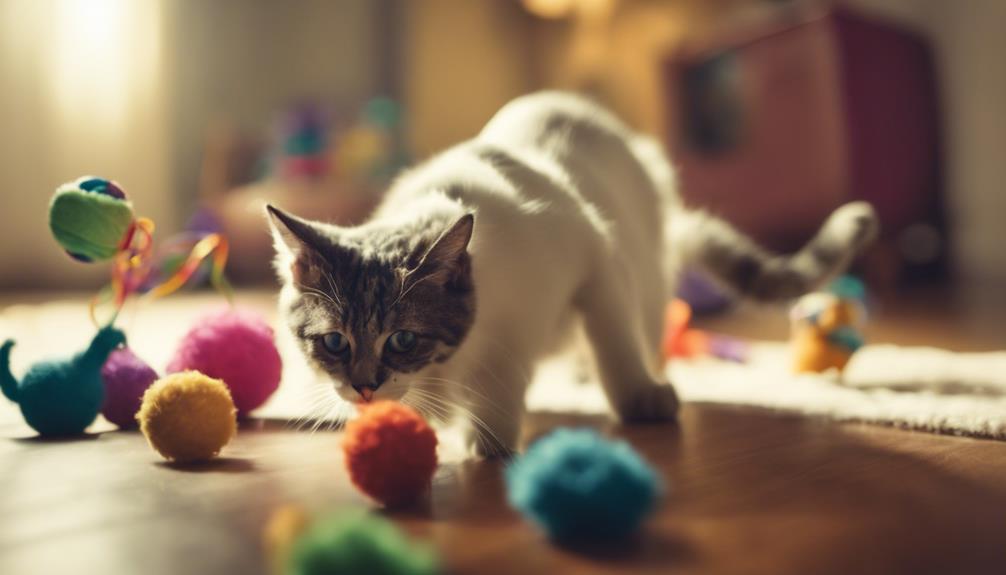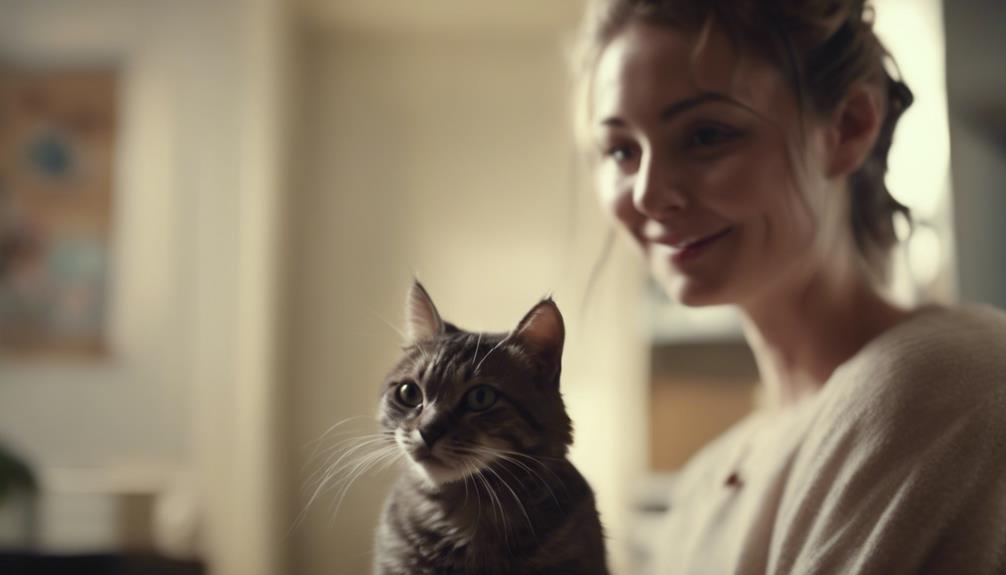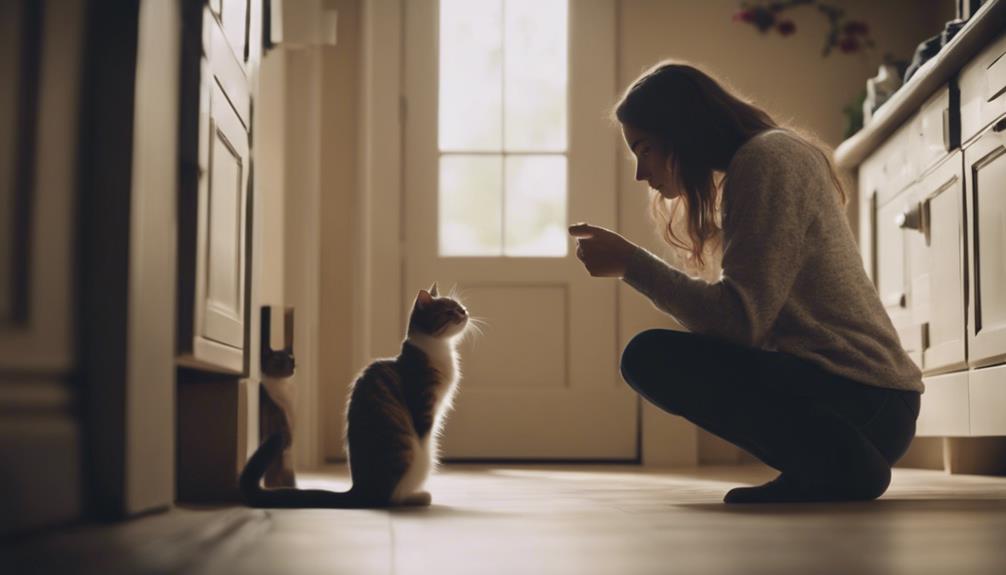How to Encourage Your Cat to Be More Vocal

If you want to encourage your cat to be more vocal, there are several strategies you can try. First, spend quality time with your cat, talking to them in a gentle and reassuring voice. This can help your cat feel more comfortable communicating with you. Additionally, pay attention to your cat's body language and vocalizations to better understand what they are trying to communicate. Providing interactive toys and engaging in playtime can also encourage your cat to be more vocal. Lastly, be patient and consistent in your efforts to improve communication and bonding with your feline companion. By implementing these tips, you can strengthen your relationship with your cat and encourage them to be more vocal in expressing their needs and desires.
Remember, every cat is unique, so it may take time to find the right approach that works best for your furry friend. By being attentive and responsive to your cat's cues, you can build a stronger bond and enhance communication with your beloved pet.
Understanding Your Cat's Communication Style
How does your cat communicate with you, and what're the signs to look out for in understanding their communication style? Cats use a combination of feline body language, vocalization, and non-verbal communication cues to express their needs and emotions. Understanding these signals is crucial for building a strong bond with your feline companion.
Feline body language is a significant aspect of cat communication. A cat's posture, tail position, ear movement, and eye contact can convey a lot about their current state of mind. For example, a cat with an arched back and puffed-up fur may be feeling scared or threatened, while a cat with a relaxed body posture and gently swaying tail is likely content and approachable.
Vocalization is another key component of cat communication. Meowing, purring, hissing, and chirping are some common vocalizations that cats use to communicate with their owners. Each type of vocalization can indicate different emotions or needs, such as hunger, affection, or discomfort.
Additionally, non-verbal communication cues like rubbing against you, kneading, or slow blinking are ways in which cats express their trust and affection towards their owners. By paying attention to these subtle cues, you can strengthen your relationship with your cat and ensure their well-being.
Creating a Safe and Comfortable Environment

To ensure your cat feels secure and at ease, creating a safe and comfortable environment is essential for their overall well-being. Start by providing a calm, quiet atmosphere within your home. Cats appreciate tranquility, so minimizing loud noises and sudden disruptions can help them feel more relaxed and open to vocalizing.
Additionally, make sure to offer cozy hiding spots where your cat can retreat to when feeling overwhelmed or anxious. These hiding spots can be in the form of cat beds, cozy blankets, or even cardboard boxes that provide a sense of security.
Cats often vocalize more when they feel safe and comfortable in their surroundings, so by creating an environment that caters to their need for peace and security, you can encourage them to express themselves through their unique vocalizations.
Using Positive Reinforcement Techniques

When encouraging vocalization in cats, using positive reinforcement techniques can be highly effective.
Rewarding your cat for meowing and utilizing clicker training methods are two key strategies to consider.
Rewarding for Meowing
Encouraging your cat to meow more can be achieved by implementing positive reinforcement techniques, such as rewarding them with treats or affection every time they vocalize. Cats respond well to incentives, so providing sound rewards for their vocalizations can help reinforce this behavior.
When your cat meows, offer them a tasty treat or some extra pets and attention to show that their vocalization is appreciated. By consistently rewarding your cat for meowing, you're reinforcing the connection between their vocalizations and positive outcomes, encouraging them to communicate more frequently.
Over time, this positive reinforcement can help your cat become more vocal and expressive, strengthening the bond between you and your furry friend.
Clicker Training Techniques
Implementing clicker training techniques can be an effective way to utilize positive reinforcement in enhancing your cat's vocal communication skills. Clicker conditioning involves associating the sound of a clicker with a reward to reinforce desired behaviors.
Here are some tips for vocalization training using clicker training techniques:
- Start with Basic Commands: Begin with simple vocal commands like 'meow' and click the clicker immediately after your cat vocalizes.
- Reward Consistently: Be consistent in rewarding vocalizations with treats or affection to strengthen the association with the clicker sound.
- Gradually Increase Difficulty: As your cat becomes more vocal, gradually increase the complexity of commands to encourage a variety of vocalizations.
Engaging in Interactive Play Sessions

When engaging in interactive play sessions with your cat, it's essential to carefully consider the selection of toys to ensure they match your cat's preferences and play style.
Timing of play sessions is crucial, as cats have specific times of day when they're most active and receptive to play.
Understanding your cat's communication cues during play, such as tail flicking or ear flattening, can help strengthen your bond and make the play sessions more enjoyable for both of you.
Toy Selection for Play
During interactive play sessions, choose toys that stimulate your cat's natural instincts and keep them engaged. Understanding your cat's play preferences is crucial in selecting the right toys. Here are some tips to help you make the best choices:
- Interactive Toys: Opt for toys that encourage your cat to chase, pounce, and stalk, mimicking their natural hunting behavior.
- Variety is Key: Provide a mix of toys such as wand toys, balls, and puzzle feeders to keep your cat mentally stimulated during playtime.
- Consider Texture: Cats may have preferences for certain textures like feathers, crinkly materials, or soft fabrics, so observe what your cat enjoys most.
Timing of Play
To optimize your cat's playtime experience and ensure they remain active and engaged, it's essential to consider the timing of interactive play sessions. Play schedules should be consistent to establish a routine for your feline friend. Cats thrive on predictability, so setting specific times for play can help them anticipate and look forward to these sessions.
When engaging in interactive play, observe your cat's vocalization cues; some may meow more when they're excited or eager to play. Reinforce positive vocalizations by responding with playtime. Morning and evening play sessions are generally well-received by cats, aligning with their natural hunting instincts.
Communication Cues Understanding
Understanding your cat's communication cues during interactive play sessions is crucial for strengthening your bond and ensuring a fulfilling playtime experience. Cats communicate through vocalization cues and body language signals, which can vary from purring to meowing, chirping, or hissing. By paying attention to these cues, cat owners can better understand their feline companions and tailor play sessions to meet their needs effectively.
Training your cat to respond to specific vocalization cues can enhance communication and deepen the bond between you. Similarly, interpreting your cat's body language signals, such as flattened ears or a twitching tail, can help you adjust your play style to ensure a positive and engaging experience for both you and your furry friend.
Incorporating Vocal Encouragement

Implementing positive reinforcement techniques through consistent verbal cues can effectively encourage your cat to be more vocal in their communication with you. Vocal training involves using specific words or sounds consistently when interacting with your cat. For instance, saying 'meow' or 'talk to me' each time you engage with your cat can serve as meow motivation for them to respond vocally.
When incorporating vocal encouragement, it's essential to be patient and consistent. Cats may take time to associate certain words or sounds with vocalizing. Repetition is key in reinforcing the connection between verbal cues and vocal responses. Additionally, offering treats or affection whenever your cat vocalizes in response to your cues can further reinforce this behavior.
Being Patient and Consistent

Being patient and consistent with your cat's vocal training is essential for successful results in encouraging them to communicate more vocally. Cats, like humans, require time to learn new behaviors and habits. By maintaining patience and consistency in your training efforts, you can effectively help your cat become more vocal over time.
Tips for Being Patient and Consistent:
- Set Realistic Expectations: Understand that vocal training takes time and each cat progresses at their own pace.
- Establish a Routine: Create a consistent training schedule to reinforce vocal behaviors.
- Use Positive Reinforcement: Reward your cat with treats, praise, or playtime when they vocalize, encouraging them to continue this behavior.
Seeking Professional Advice if Needed

If you encounter challenges or feel unsure about your cat's vocal training progress, consider consulting a professional veterinarian or animal behaviorist for expert guidance. These professionals are well-equipped to assess your cat's behavior and vocal patterns, providing tailored advice on how to encourage more vocalization if needed. When seeking assistance, look for professionals experienced in behavior therapy and vocal coaching for cats.
A professional veterinarian can rule out any underlying medical conditions that may be affecting your cat's vocalization. They can also offer insights into how your cat's overall health and well-being may be influencing their vocal behavior. An animal behaviorist specializes in understanding animal behavior and can provide valuable strategies to help your cat become more vocal. They may recommend specific training techniques, environmental changes, or behavior modification methods to encourage vocalization.
Frequently Asked Questions
Can Certain Breeds of Cats Be Naturally More Vocal Than Others?
Certain breeds of cats can indeed be naturally more vocal than others. Breeds comparison reveals variations in their vocal behavior. Environmental influences play a role in shaping a cat's vocal communication, with some breeds being more talkative than others.
Are There Any Health Reasons Why a Cat May Not Be Vocal?
Sometimes a cat's silence can be a sign of underlying health issues. Regular health checkups are crucial to rule out any medical reasons for a cat's quiet nature. Vocal training can also help improve communication.
How Can I Tell if My Cat's Lack of Vocalization Is Due to Shyness or Fear?
To determine if a cat's lack of vocalization is due to shyness or fear, observe its body language and reactions. Shyness may manifest through avoidance, while fear can be seen in heightened alertness. Environmental factors and socialization also play a role.
Can a Cat's Vocalizations Change as They Age?
As cats age, their vocalizations may change due to various factors such as health issues, cognitive decline, or simply evolving communication preferences. Vocal training can help maintain or improve their ability to express themselves effectively.
Are There Any Specific Vocal Cues I Should Look Out for to Gauge My Cat's Mood or Needs?
Observing a cat's vocal cues and body language is crucial to understanding its emotions and needs. Changes in meows, purring, or hissing can indicate varying moods or desires. Paying attention to these behaviors helps decipher a cat's communication effectively.











